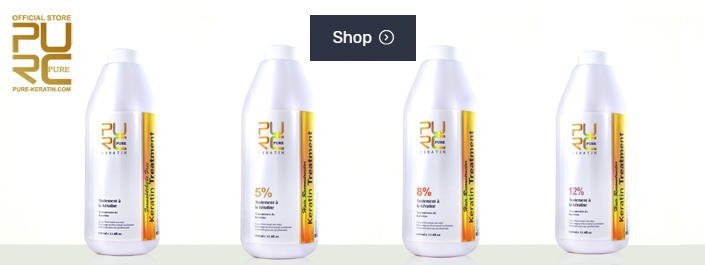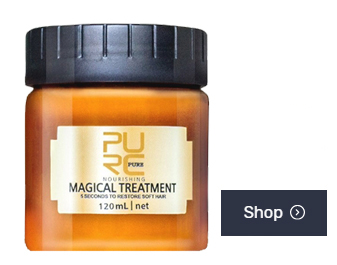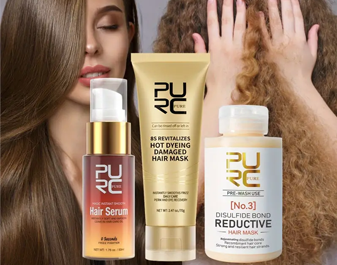Keratin Hair Treatment at Salon
PURE KERATIN on 3rd Jun 2024
Keratin hair treatment has become a buzzword in the beauty industry, and for a good reason. This transformative treatment promises to turn frizzy, unmanageable hair into silky, smooth locks. But what exactly is keratin hair treatment, and why is it so popular? Let's dive in and explore everything you need to know about this hair-saving process.
What is Keratin?
Keratin is a natural protein found in our hair, skin, and nails. It acts as a protective shield against external damage and is responsible for maintaining the structure and strength of hair. However, environmental factors, chemical treatments, and heat styling can deplete keratin levels, leading to dull, brittle hair.
Understanding Keratin Hair Treatment
Keratin hair treatment is a chemical process that infuses hair with a solution rich in keratin. This treatment helps to rebuild and restore the protein in your hair, resulting in smoother, shinier, and healthier-looking locks. There are several types of keratin treatments available, each offering varying degrees of straightening and smoothing.
Benefits of Keratin Hair Treatment
Smooth and Shiny Hair
One of the most noticeable benefits of keratin treatment is the dramatic improvement in hair texture. Your hair becomes visibly smoother and shinier, making it look healthier and more vibrant.
Frizz Reduction
Keratin treatments are particularly popular among those struggling with frizzy hair. By sealing the hair cuticle, the treatment effectively reduces frizz and makes your hair more manageable.
Long-lasting Results
Unlike other hair treatments that require frequent reapplication, keratin treatments can last anywhere from three to six months, depending on your hair type and aftercare routine.
Easier Styling
Post-treatment, you'll find that your hair is much easier to style. Whether you prefer to blow-dry or straighten your hair, the time and effort required will be significantly reduced.
How Does Keratin Treatment Work?
The process of keratin treatment is both scientific and meticulous. Here's a step-by-step breakdown of what happens during a typical session:
- Hair Washing: Your hair is thoroughly washed to remove any dirt or product buildup.
- Application: The keratin solution is applied to your hair, section by section.
- Heat Activation: A flat iron is used to seal the solution into your hair, which activates the keratin and locks in the smoothness.
- Rinsing and Conditioning: After the solution has set, your hair is rinsed and conditioned.
Different Types of Keratin Treatments
Brazilian Blowout
The Brazilian Blowout is one of the most popular types of keratin treatments. It offers a customizable smoothing effect, allowing you to keep your curls or go completely straight.
Japanese Hair Straightening
This method offers permanent straightening and is ideal for those looking for a long-term solution. However, it's more intense and can be damaging if not done correctly.
Express Keratin Treatment
For those short on time, express treatments offer a quicker alternative. While the results may not last as long as traditional methods, it's a convenient option for a quick hair fix.
Pre-Treatment Considerations
Before booking a keratin treatment, there are several factors to consider:
Hair Type and Condition
Keratin treatments work best on certain hair types. It's crucial to assess your hair's condition to determine if this treatment is right for you.
Allergy Test
To avoid any adverse reactions, it's recommended to do a patch test before undergoing the full treatment.
Consultation with Stylist
A professional consultation can help you understand what to expect and how to prepare for the treatment. Your stylist can also recommend the best type of keratin treatment for your hair.
The Salon Experience
Choosing the right salon is essential for a successful keratin treatment. Look for salons with certified professionals and positive reviews. During the treatment, you can expect a thorough and detailed process that leaves your hair feeling revitalized.
Post-Treatment Care
Immediate Aftercare
After your treatment, there are specific guidelines to follow to ensure the best results. Avoid washing your hair for at least 72 hours and refrain from tying it up to prevent kinks.
Long-term Maintenance
To prolong the effects of the treatment, use sulfate-free shampoos and conditioners. Regular touch-ups and a consistent hair care routine will help maintain the smoothness and shine.
Common Myths and Misconceptions
Myth: Keratin Treatments Damage Hair
Contrary to this belief, keratin treatments can actually strengthen and protect your hair when done correctly.
Myth: Results are Permanent
While keratin treatments offer long-lasting results, they are not permanent. The effects will gradually fade over time, requiring reapplication.
Myth: It's Only for Curly Hair
Keratin treatments are suitable for all hair types, not just curly or frizzy hair. Even those with straight hair can benefit from the added smoothness and shine.
Potential Side Effects
Short-term Effects
Some people may experience minor scalp irritation or an allergic reaction to the chemicals used in the treatment.
Long-term Considerations
Repeated treatments can sometimes lead to hair damage if not spaced out properly. It's essential to follow your stylist's recommendations and give your hair time to recover between sessions.
Formaldehyde Concerns
Certain keratin treatments contain formaldehyde, which can be harmful if inhaled. Opt for formaldehyde-free options if you're concerned about this chemical.
Keratin Treatment vs. Other Hair Treatments
Comparison with Regular Conditioning
While regular conditioners can help maintain hair health, they don't offer the same level of smoothness and frizz reduction as keratin treatments.
Comparison with Chemical Straightening
Chemical straightening provides permanent results but can be more damaging than keratin treatments. Keratin treatments are a gentler alternative that still offers significant smoothing benefits.
Cost of Keratin Hair Treatment
Price Range
The cost of keratin treatments can vary widely, typically ranging from $150 to $600, depending on the salon and the type of treatment.
Factors Affecting Cost
Factors such as hair length, thickness, and the specific treatment used can all influence the final price.
DIY Keratin Treatments
Home Kits vs. Professional Treatments
While home kits are available, they often don't provide the same quality results as professional treatments. Professional treatments ensure proper application and long-lasting effects.
Risks and Benefits
DIY treatments can be cost-effective but come with risks, such as incorrect application and potential hair damage. Professional treatments, though pricier, offer a safer and more reliable outcome.
Conclusion
Keratin hair treatments have revolutionized the way we manage our hair, offering a solution for frizz-free, smooth, and shiny locks. While they come with their own set of considerations and costs, the benefits often outweigh the drawbacks. If you're looking for a way to transform your hair and simplify your styling routine, a keratin treatment at a reputable salon might be the perfect solution.
FAQs
- How long does a keratin treatment last?
- A keratin treatment typically lasts between three to six months, depending on your hair type and aftercare routine.
- Can keratin treatment be done on colored hair?
- Yes, keratin treatments can be safely done on colored or chemically treated hair. In fact, they can help improve the texture and shine of dyed hair.
- How often should you get a keratin treatment?
- It's generally recommended to get a keratin treatment every three to six months, depending on your hair's needs and how quickly the effects wear off.
- Is keratin treatment safe for all hair types?
- Yes, keratin treatments are suitable for all hair types. However, it's essential to consult with a stylist to choose the right type of treatment for your specific hair needs.
- What should you avoid after getting a keratin treatment?
- After a keratin treatment, avoid washing your hair for at least 72 hours, and refrain from using hair ties or clips to prevent kinks. Additionally, use sulfate-free hair products to maintain the treatment's effects.



















